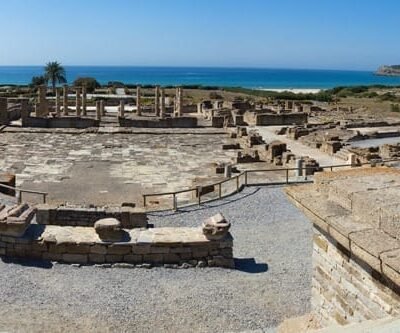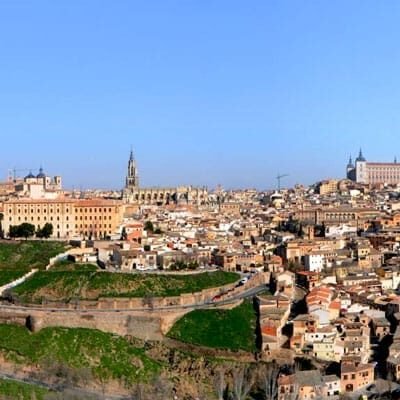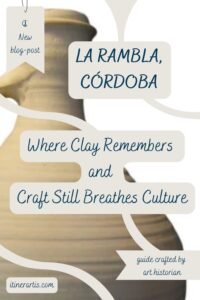Exploring the Sanctuary of Loyola: Where History Meets Spirituality
What draws someone to a remote valley in northern Spain? Perhaps it’s curiosity, perhaps something quieter—a need to stand where stories of purpose were first set in motion. The Sanctuary of Loyola isn’t just a religious monument; it’s a place where personal transformation once began and continues to echo across centuries.
![Sanctuary of Loyola, General View, Azpeitia, Basque Country, Spain [Edited Photograph]. Credit: Txo. Licensed under CC BY-SA 3.0 and GFDL.](https://itinerartis.com/wp-content/uploads/2024/11/Sanctuary-of-Loyola-General-View-Azpeitia-Basque-Country-Spain-Edited-Photograph.-Credit-Txo.-Licensed-under-CC-BY-SA-3.0-and-GFDL.jpg)
Set against the rolling hills of the Basque Country, this complex grew around the family home of Ignatius of Loyola—the soldier-turned-mystic who would go on to found the Society of Jesus. Today, visitors can walk through the very rooms where he recovered from injury and began to reimagine his life. Beyond the intimate chapel and tower, the sanctuary unfolds into a vast Baroque basilica, its soaring dome and harmonious design reflecting both spiritual ambition and artistic refinement.
But this isn’t a visit reserved for pilgrims alone. Whether you’re drawn by Ignatian history, architectural beauty, or a deeper cultural lens, the Sanctuary of Loyola offers more than expected. In the paragraphs ahead, you’ll find not just practical tips, but stories, context, and moments that make this site one of Spain’s most quietly powerful destinations.
Post last updated on April 1, 2025 (originally published on November 29, 2024) by Roberta Darie.

- Where Is the Sanctuary of Loyola and How to Get There?
- What Makes the Sanctuary of Loyola Special? Is It Worth Visiting?
- A short History of the Sanctuary
- What to See at the Sanctuary of Loyola
- 1. The Main Sanctuary's Building
- 2. Basilica at the Sanctuary of Loyola
- 3. Imperial Staircases at the Sanctuary of Loyola
- 4. Refectories at the Sanctuary of Loyola
- 5. Portico and Facade of the Sanctuary of Loyola
- 6. Interior Design of the Sanctuary of Loyola
- 7. Birthplace of St. Ignatius of Loyola
- 8. Gardens and Surroundings of the Sanctuary
- 9. Art and Relics at the Sanctuary of Loyola
- Activities You Can Do at the Sanctuary of Loyola
- When to Visit the Sanctuary of Loyola
- How Long to Stay
- Final Reflections on the Sanctuary of Loyola
“Pray as if everything depends on God. Work as if everything depends on you.”
— Ignacio de Loyola

Where Is the Sanctuary of Loyola and How to Get There?
Tucked into the verdant Urola Valley in northern Spain, the Sanctuary of Loyola sits quietly just outside the town of Azpeitia, in the province of Gipuzkoa. This serene corner of the Basque Country, cradled by soft hills and forested slopes, was the birthplace of Saint Ignatius of Loyola—one of Spain’s most influential spiritual figures. Today, it remains a destination that invites reflection, not far from the pulse of the modern world.
The sanctuary is easily accessible from several major cities. From San Sebastián, it’s a 75-minute drive (about 70 km / 43.5 mi) inland. Bilbao, with its mix of contemporary art and historic charm, is also close—roughly 90 km (56 mi) by road. Both cities offer train and bus connections to Azpeitia, though renting a car gives travelers greater flexibility to explore the surrounding countryside.
Once there, the setting does most of the work. A walk through Azpeitia reveals traditional Basque architecture, quiet cafés, and views of the basilica’s dome rising in the distance. Whether you’re visiting as a pilgrim or a curious traveler, the Sanctuary of Loyola rewards the effort to reach it—with silence, with beauty, and with a story still unfolding.
What Makes the Sanctuary of Loyola Special? Is It Worth Visiting?
There’s a quiet gravity to the Sanctuary of Loyola. A feeling that something meaningful happened here, and still lingers. Built around the 15th-century tower house where Ignatius of Loyola was born, the site seamlessly blends personal history with monumental ambition. The basilica, constructed between 1689 and 1738, is a triumph of Spanish Baroque, with its sweeping colonnades, harmonious symmetry, and an 18-meter (59-foot) dome that rises above the valley like a compass pointing skyward.
Inside, the atmosphere shifts. Light filters through stained glass, catching the gold accents of the altarpiece. Every detail—from the marble inlays to the sculpted saints—was designed to inspire reflection. Yet, the heart of the sanctuary lies deeper: in the former family residence of Ignatius himself. Visitors can still enter the humble room where he recovered from a war injury and began the inward journey that would lead to the founding of the Jesuits.
So, is it worth visiting? Absolutely—though not just for the architecture. The Sanctuary of Loyola offers something rare: a space that holds both silence and story. Whether you come for faith, art, or the sheer curiosity of standing where a global movement began, it invites you to pause. And perhaps, like Ignatius, to reconsider the path ahead.

A short History of the Sanctuary
The Sanctuary of Loyola has a rich history that dates back to the 16th century. It was built to honor St. Ignatius of Loyola, the founder of the Jesuit order. Born in 1491, Ignatius spent his early years in the castle that now forms part of the sanctuary complex.
After a life-changing spiritual awakening, Ignatius dedicated himself to religious service. His influence spread globally, inspiring the construction of this sanctuary. The site became a place for reflection and pilgrimage, celebrating his legacy and teachings.
Over the centuries, the Sanctuary of Loyola has evolved into a symbol of spiritual devotion. Its history reflects the enduring impact of St. Ignatius, making it a significant destination for those interested in religious and cultural history.
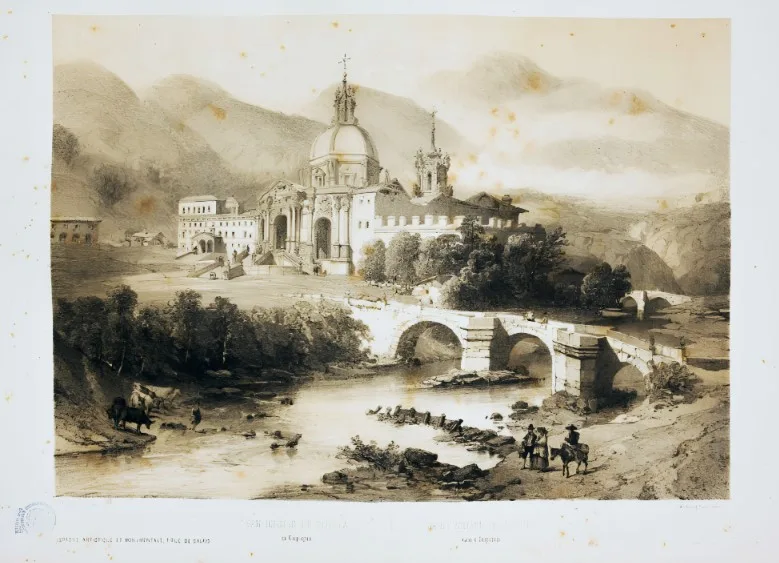
What to See at the Sanctuary of Loyola
The Sanctuary of Loyola offers a rich tapestry of sights that captivate visitors of all backgrounds. From its grand basilica to the intimate spaces of Ignatius’s family home, each corner reveals a layer of history, faith, and artistry. Ahead lies a compreensive list—so you can explore with purpose, context, and curiosity.
1. The Main Sanctuary’s Building
The Sanctuary of Loyola features a stunning main building crafted from marble. This architectural marvel glows golden at sunset, creating a breathtaking sight. Designed to resemble a grand eagle of stone, the structure captures the imagination.
At the heart of this building lies the Holy House, a place of deep spiritual significance. It serves as a focal point for pilgrims and visitors alike. The building’s design reflects both strength and grace, embodying the sanctuary’s spiritual essence.
The main building not only stands as a testament to architectural brilliance, but also symbolizes the enduring legacy of St. Ignatius. Its unique design and radiant beauty make it a must-see for anyone visiting the Sanctuary of Loyola.

2. Basilica at the Sanctuary of Loyola
The Basilica at the Sanctuary of Loyola stands as a breathtaking centerpiece, immediately drawing the eye with its stunning design. Its distinctive circular shape, crowned by a towering dome, is a marvel of baroque architecture that commands attention from the moment you approach. This architectural gem is a prime example of the baroque style, further enhanced by the exuberant churrigueresque ornamentation that adorns both the interior and exterior.
As you approach the basilica, every detail of its structure speaks to the highest level of artistic excellence. The ornate decorations and the grand façade, with its intricate carvings and sculptural details, create an overwhelming sense of awe, inviting visitors to pause and appreciate the craftsmanship. This combination of scale and design highlights the basilica’s significance as both a religious and artistic treasure.

3. Imperial Staircases at the Sanctuary of Loyola
The Sanctuary of Loyola is home to two magnificent imperial staircases, each a stunning example of baroque design and architectural splendor. These grand staircases elegantly connect the different floors of the sanctuary, guiding visitors through the site while offering a visual journey into the history of the Jesuit order.
Adorned with statues of saints and popes significant to the Jesuit legacy, the staircases serve not only a functional purpose but also enhance the overall artistic and spiritual atmosphere of the sanctuary. These statues, carefully placed along the steps, honor key figures such as St. Ignatius of Loyola and other influential saints and popes who played vital roles in shaping the Jesuit order.
Moreover, the staircases’ craftsmanship and decorative elements reflect the grandeur of the era in which the sanctuary was constructed, particularly during the 18th century when baroque architecture reached its height in Spain. As you ascend the steps, you are not only moving through space but also traveling through time, experiencing a tangible connection to the past.
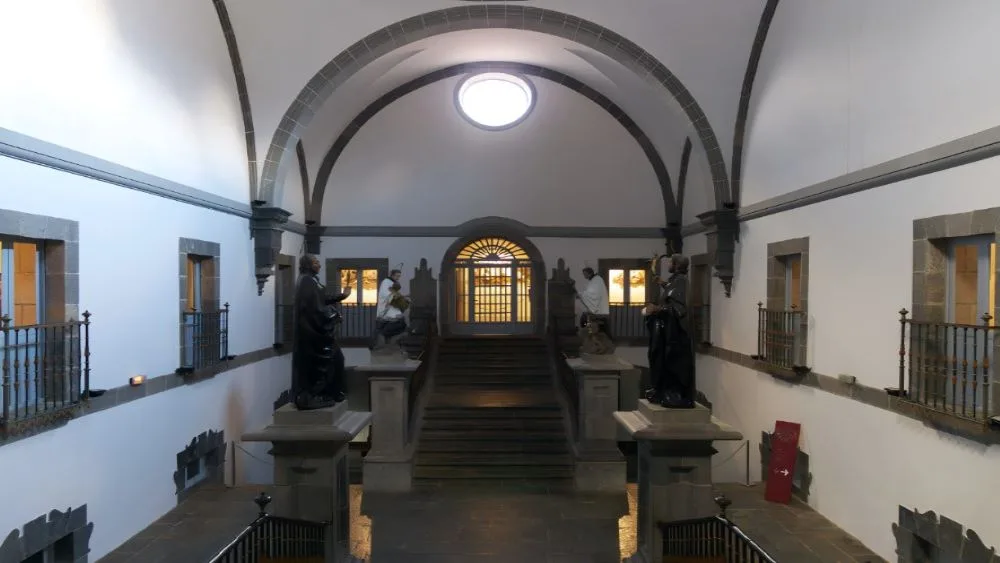
4. Refectories at the Sanctuary of Loyola
The refectories at the Sanctuary of Loyola blend elegance with sobriety. These spaces feature exquisite marble and artistic decorations, creating a serene atmosphere. A highlight is the stunning painting of the Last Supper, which captivates visitors with its detail and emotion.
The refectories serve as more than dining areas; they are places of reflection and gathering. The combination of art and architecture invites visitors to appreciate the sanctuary’s rich cultural heritage. Each element within the refectories contributes to their timeless beauty.
5. Portico and Facade of the Sanctuary of Loyola
The entrance to the Basilica at the Sanctuary of Loyola is truly grand. A wide staircase leads up to an impressive portico, setting the stage for what lies within. This entrance features statues that honor significant religious figures, adding a touch of reverence.
Above the portico, you’ll find the Bourbon crest. This emblem connects the sanctuary’s history to the influential Bourbon dynasty. The blend of artistic elements and historical symbols enhances the façade’s grandeur.

6. Interior Design of the Sanctuary of Loyola
The interior of the Sanctuary of Loyola is a masterpiece of decoration. Rich marble and gold details create an atmosphere of opulence and reverence. The circular layout guides visitors through a harmonious space, enhancing the spiritual experience.
A large mosaic floor adds to the visual splendor. This intricate design reflects both artistry and devotion, capturing the essence of the sanctuary. Every element within the interior complements the overall aesthetic, making it a feast for the eyes.

7. Birthplace of St. Ignatius of Loyola
The Birthplace of St. Ignatius is a cornerstone of the Sanctuary of Loyola. This historic site marks the origin of a transformative spiritual journey. St. Ignatius, born here in 1491, later founded the Jesuit order, impacting the world profoundly.
Visiting his birthplace offers a unique glimpse into history. The preserved rooms reflect the era’s lifestyle and provide insight into St. Ignatius’s early life. This connection to his personal story adds depth to the sanctuary’s spiritual significance.
8. Gardens and Surroundings of the Sanctuary
The gardens at the Sanctuary of Loyola offer a haven of tranquility and beauty. Lush greenery and vibrant flowers create a serene environment, perfect for reflection. As you wander through the paths, the peaceful ambiance envelops you.
These gardens provide more than just visual appeal. They serve as a natural extension of the sanctuary’s spiritual atmosphere. The gentle rustle of leaves and the soft fragrance of blossoms enhance the sense of calm.
Surrounded by the stunning Basque landscape, the gardens invite visitors to pause and appreciate nature’s beauty. This harmonious setting makes the Sanctuary of Loyola not only a place of historical significance, but also a peaceful retreat for all who visit.
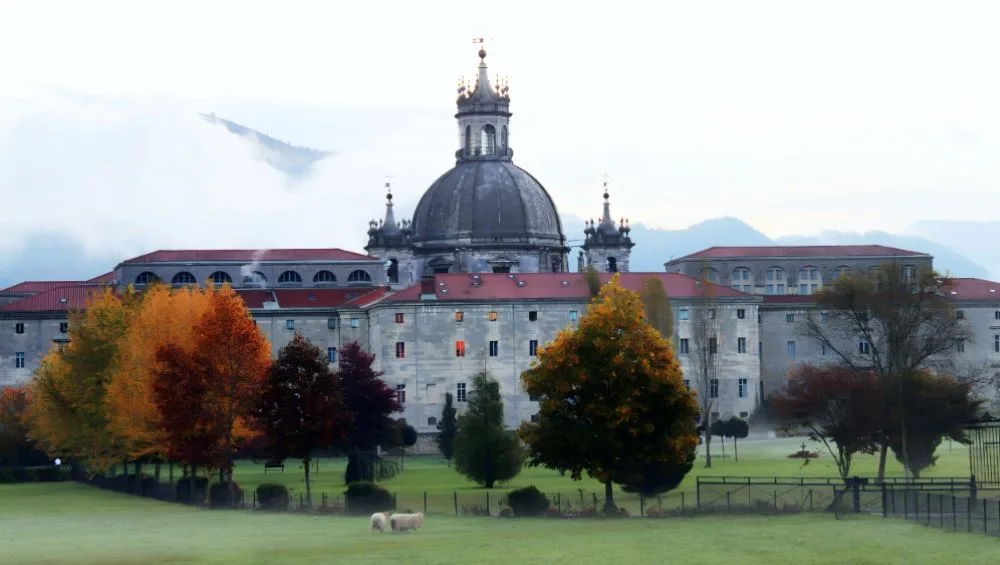
9. Art and Relics at the Sanctuary of Loyola
The Sanctuary of Loyola houses an impressive collection of art and religious relics. These treasures offer a glimpse into the rich spiritual heritage of the site. Notable artworks include intricate paintings and sculptures that depict significant religious themes.
Among the relics, you’ll find items linked to St. Ignatius himself. These objects hold great significance for pilgrims and art enthusiasts alike. Each piece tells a story, adding depth to the sanctuary’s historical narrative.
Activities You Can Do at the Sanctuary of Loyola
- The Sanctuary of Loyola offers a variety of enriching activities. Start with a guided tour of the sanctuary and its grounds. These tours provide fascinating insights into the site’s history and architecture.
- Attending a religious service or event can deepen your experience. The sanctuary hosts various spiritual gatherings, allowing you to participate in its vibrant community life.
- For those who love nature, explore the nearby walking trails. These scenic paths offer breathtaking views of the Basque countryside. Whether you’re seeking spiritual enrichment or natural beauty, the Sanctuary of Loyola provides activities for all interests.
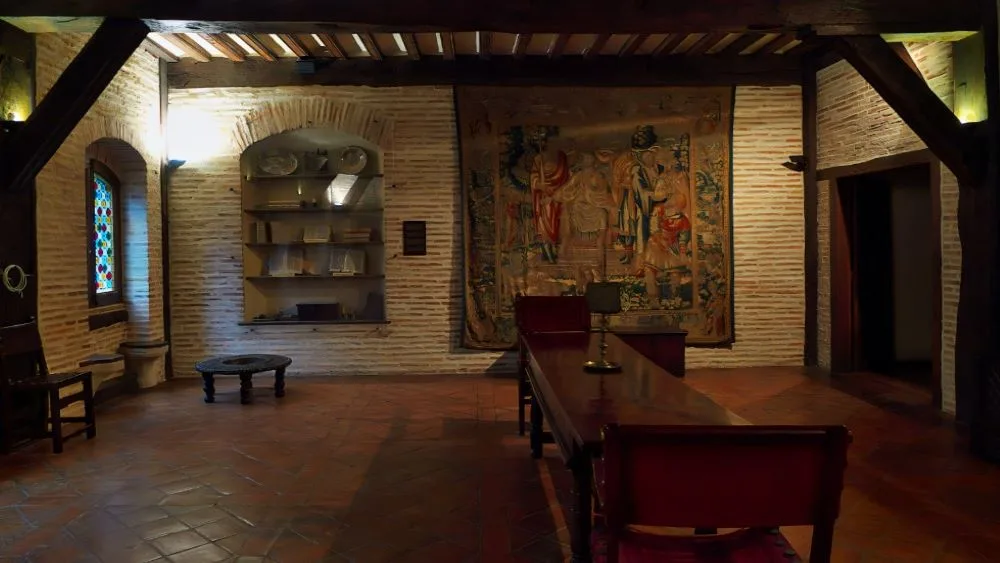
When to Visit the Sanctuary of Loyola
The best time to visit the Sanctuary of Loyola is during spring and early autumn. These seasons offer mild weather, perfect for exploring the sanctuary and its beautiful surroundings. The lush Basque landscape is particularly stunning during these times.
Consider planning your visit around special events. The Feast of St. Ignatius, celebrated on July 31st, attracts many visitors. This celebration includes religious services and cultural activities, providing a unique experience.
Visiting during these periods allows you to enjoy both the natural beauty and vibrant cultural life of the sanctuary. Whether you’re drawn by the peaceful ambiance or the lively events, the Sanctuary of Loyola offers something special year-round.

How Long to Stay
To fully experience the Sanctuary of Loyola, plan for a two-day visit. This duration allows you to explore the sanctuary’s rich history and beautiful surroundings at a relaxed pace. Spend one day touring the basilica, the Holy House, and the gardens. On the second day, enjoy nearby walking trails and delve into local culture.
If you’re short on time, a one-day visit can still be rewarding. Arrive early to join a guided tour, which provides valuable insights into the site’s significance. Then, take a moment to enjoy the tranquility of the gardens and reflect on your experience.
Whether you stay for one day or two, the Sanctuary of Loyola offers a profound and enriching journey.
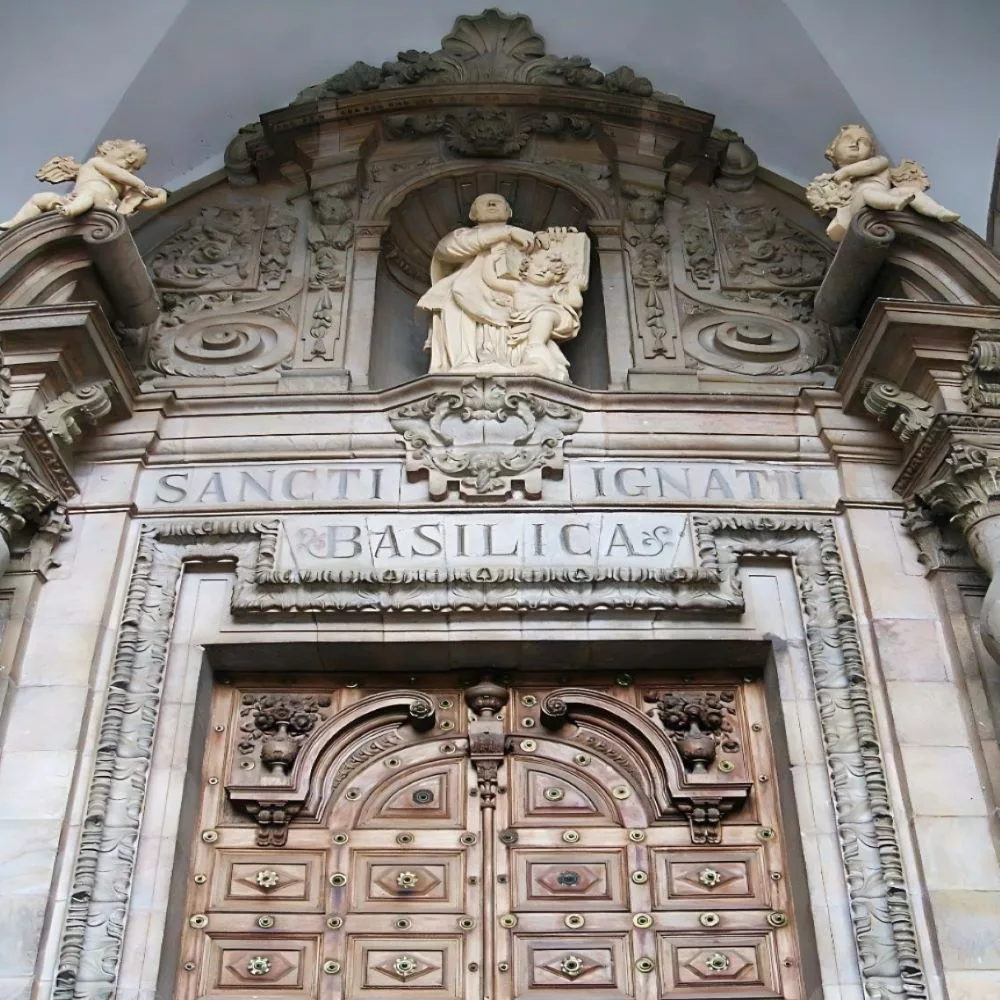
Final Reflections on the Sanctuary of Loyola
What begins as a journey to a quiet valley in northern Spain often ends in something deeper: perspective. The Sanctuary of Loyola, rooted in the life of Ignatius and shaped by centuries of faith and art, is not only a site of pilgrimage. It’s a layered experience—historic, architectural, and deeply human.
Throughout its halls and gardens, you’ve traced the footsteps of a young nobleman who turned inward, then outward, reshaping the spiritual landscape of Europe. You’ve stood beneath a basilica dome that rises with intention, and walked through rooms that once held silence, pain, and transformation. Every detail—carved, painted, or planted—tells part of the story.
If the idea of travel is to learn not just about a place, but about yourself within it, then the Sanctuary of Loyola is well worth the stop. Whether you leave with photographs, questions, or quiet inspiration, this place stays with you. If it sparked a thought, share it—or better yet, go see it. And when you do, pause for a moment at the threshold of the old tower. Some journeys start with a single step; others begin in stillness.


